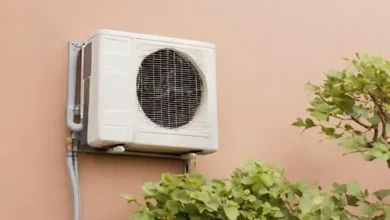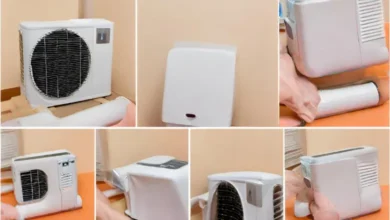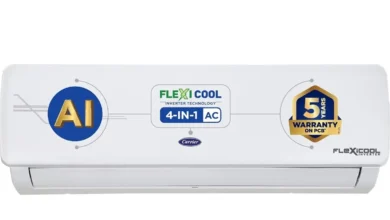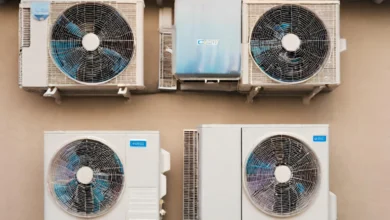Optimizing Energy Usage: The Value of Proper AC Settings

In the ever-evolving landscape of energy efficiency, the role of air conditioning (AC) systems stands out as a significant contributor to both comfort and resource conservation. Striking the right balance between maintaining a cool and comfortable indoor environment and optimizing energy usage is crucial for sustainability and cost-effectiveness. In this comprehensive exploration, we delve into the importance of proper AC settings in achieving energy efficiency, cost savings, and environmental stewardship.
Also read: Best AC in India 2024
1. Setting the Stage for Energy Efficiency
1.1. Understanding the Impact of AC on Energy Consumption
Air conditioning systems are major players in the realm of energy consumption within homes and businesses. The settings and usage patterns of AC units directly influence the amount of electricity consumed. Recognizing the correlation between AC settings and energy usage is the first step toward achieving optimal efficiency.
1.2. Balancing Comfort and Conservation
Striking a balance between comfort and conservation is at the heart of optimizing AC settings. While the desire for a cool indoor environment is natural, excessive cooling settings or inefficient usage can lead to unnecessary energy expenditure. The key lies in finding the sweet spot where comfort coexists harmoniously with energy conservation.
2. The Temperature Conundrum: Finding the Goldilocks Zone
2.1. Recommended Temperature Settings
The U.S. Department of Energy recommends setting thermostats to 78°F (26°C) when at home and active and raising the temperature when away. In winter, lowering the thermostat to 68°F (20°C) while at home and lowering it further when away helps strike an energy-efficient balance. These settings promote comfort while minimizing energy consumption.
2.2. Utilizing Programmable Thermostats
The advent of programmable thermostats has revolutionized AC settings. These devices enable users to schedule temperature adjustments based on occupancy patterns, ensuring that the AC system operates efficiently when needed and rests when not in use. This smart approach to temperature control optimizes energy usage throughout the day.
3. Ventilation and Airflow Management
3.1. Maximizing Natural Ventilation
In temperate climates or during mild seasons, harnessing natural ventilation can significantly reduce the reliance on AC systems. Opening windows strategically to allow fresh air to circulate and cool indoor spaces can be a cost-effective and energy-efficient approach.
3.2. Regularly Maintaining Air Filters and Ducts
Proper airflow is essential for the efficient operation of AC systems. Regularly cleaning or replacing air filters and ensuring that ducts are free from obstructions contributes to optimal airflow. Unhindered air circulation minimizes the strain on the AC unit, promoting energy efficiency.
4. Harnessing the Power of Shade and Insulation
4.1. Strategic Use of Window Coverings
Shading windows from direct sunlight reduces the heat entering indoor spaces, alleviating the burden on the AC system. Utilizing curtains, blinds, or reflective window films strategically can help maintain comfortable temperatures without overworking the cooling system.
4.2. Investing in Proper Insulation
A well-insulated building acts as a natural barrier against external temperature fluctuations. Adequate insulation prevents cool air from escaping during warmer seasons and keeps the warmth inside during colder periods. This insulation prowess lessens the workload on the AC system, translating into energy savings.
5. Regular Maintenance: A Pillar of Efficiency
5.1. Routine Checks and Tune-Ups
Like any mechanical system, AC units require regular maintenance to operate efficiently. Routine checks, including cleaning coils, checking refrigerant levels, and inspecting components, ensure that the system functions optimally. Neglecting maintenance can lead to reduced efficiency and increased energy consumption.
5.2. Sealing Leaks and Ductwork Issues
Addressing any leaks or issues in the ductwork is crucial for optimizing energy usage. Leaky ducts can result in cooled air escaping before reaching its intended destination, forcing the AC system to compensate by working harder. Proper sealing and insulation of ducts contribute to energy efficiency.
6. Smart Technologies for Precision Cooling
6.1. The Rise of Smart Thermostats
Smart thermostats, equipped with advanced sensors and programmable features, offer precise control over temperature settings. These devices adapt to user preferences, occupancy patterns, and external conditions, optimizing energy usage without sacrificing comfort. Investing in smart thermostat technology is a strategic move towards efficient AC settings.
6.2. Remote Monitoring and Control
The ability to monitor and control AC settings remotely enhances energy efficiency. Smart technologies enable users to adjust temperature settings or turn off the AC when not needed, preventing unnecessary energy consumption. Real-time insights into energy usage patterns empower users to make informed decisions.
7. The Economic Impact: Saving Costs Through Efficiency
7.1. **Reducing Electricity Bills
**
One of the immediate and tangible benefits of optimizing AC settings is a reduction in electricity bills. By adopting energy-efficient practices, such as setting appropriate temperatures, scheduling cooling periods, and utilizing smart technologies, users can witness substantial savings over time.
7.2. Long-Term Sustainability
Beyond immediate cost savings, the long-term sustainability of energy resources is a critical consideration. Responsible AC settings contribute to the overall reduction in electricity demand, aligning with broader environmental goals and fostering a sustainable approach to energy consumption.
Conclusion
In the pursuit of optimal energy usage, proper AC settings emerge as a linchpin for achieving a harmonious balance between comfort and conservation. From utilizing programmable thermostats to maximizing natural ventilation and embracing smart technologies, a multifaceted approach to temperature control is essential. By implementing these strategies, individuals and businesses can not only save on energy costs but also contribute to the larger narrative of environmental stewardship, ensuring that the cool comfort we enjoy is both efficient and sustainable.






